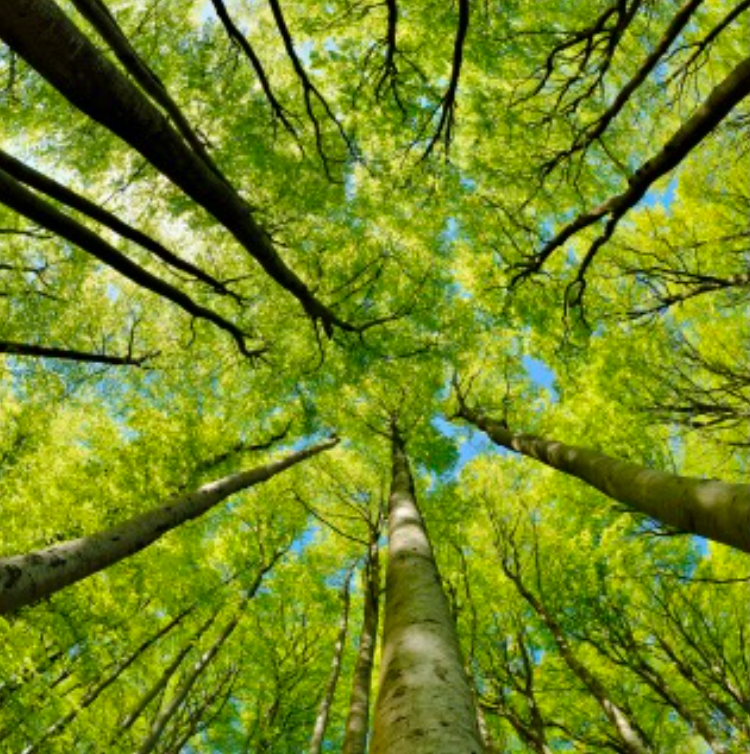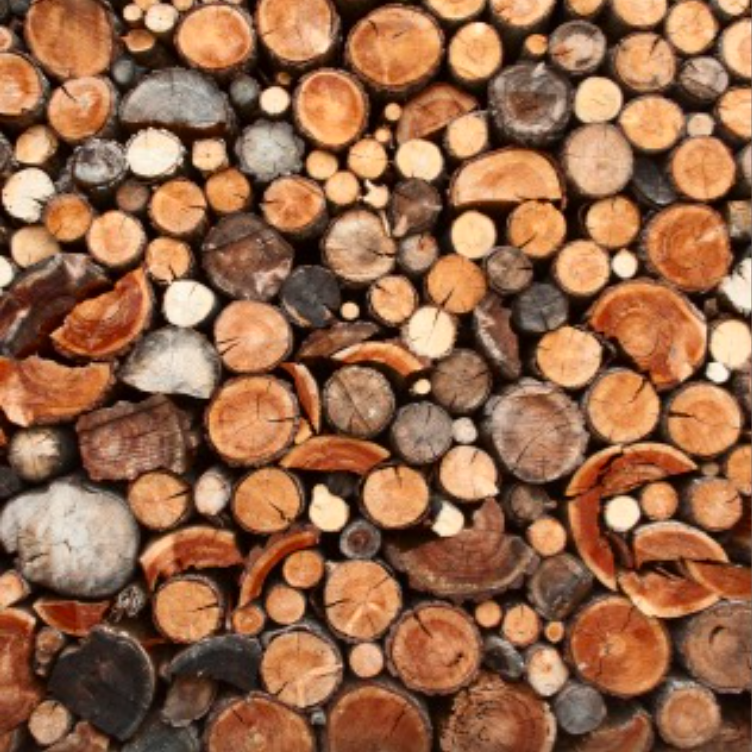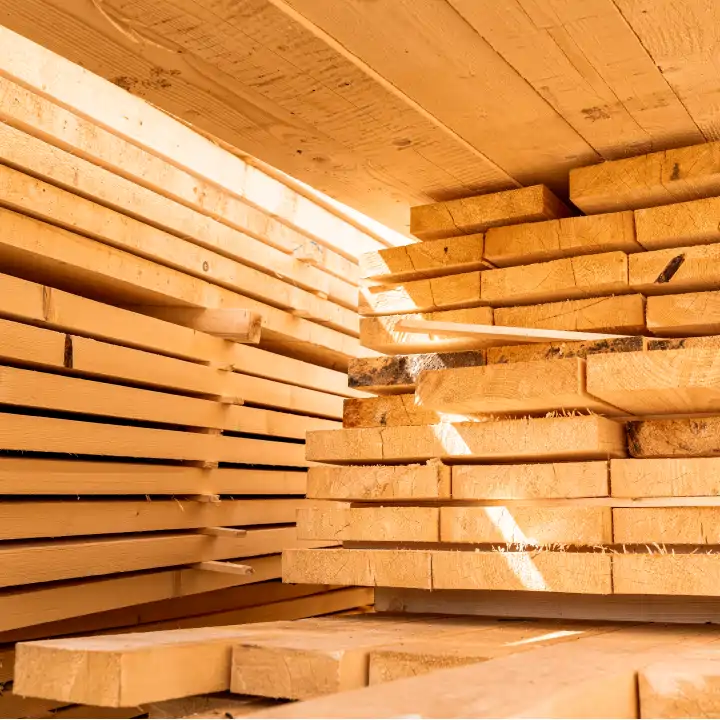Our products
The seat of our business and its administrative, commercial and logistic headquarters is in Aywaille, 30 minutes from Liège and not far from Maastricht and Aachen. The main production facility is located in Paliseul, Place de la Gare, at the heart of the magnificent forests of the Belgian Ardennes.
With its roots in these two sites and bolstered by its two bosses, Wood Wide has positioned itself as a choice supplier of timber and gives its customers a 360° vision of the wood sector.
Wood Wide sells three wood product lines:
- Basic timber: raw or forest-peeled timber/piles
- Finished wood: the roundwood line
- Finished wood: the sawn wood line


BASIC TIMBER: RAW
OR FOREST-PEELED TIMBER/PILES
Raw timber has not yet been debarked (stripped of its bark). It is the result of the very first timber processing step, which consists in felling, delimbing and hauling the tree or pole length to roadside.
This long log can be described, in the simplest possible terms, as the whole tree without its branches.
It offers a world of possibilities, as the name “Wood Wide” suggests.
Driven by the desire to position itself as a producer of added value, Wood Wide uses all its expertise in order to buy “beautiful timber”. Indeed, you need quality materials to produce quality products: straight trees planted close together and then thinned neither too soon nor too severely. Cutting the longest bolts gets the most value out of a pole, whilst crosscutting at the same time will be the most cost effective strategy.
Raw roundwood is used in many areas and countries. It is found in a great many applications: support, foundations and drainage. Wood has been used on Earth since the Middle Ages, allowing humankind to build structures on softer ground. Wood that is completely buried or submerged does not rot and there is no need to subject the piles to additional finishing such as debarking, drying and impregnation. That explains its great economic advantage, for it is much less costly than other materials. Raw timber can be pointed (given a pointy end). This is done with a chain saw for a two-faced (2V) or four-faced (4V) tip.
The first finishing done to raw timber is forest debarking or debarking on a Cambio line. The forest-peeled logs are devoid of most of their bark. In a way, they have undergone rough debarking. This type of finishing is necessary for certain applications such as poles in Italy, which are then sawn again on two or four sides to build the inner frames of roofs typical of northern Italy. Certain industries also require stripping most of the bark, because the bark creates problems for the industrial process as well as for the colour of the final product. Since the bark beetle health crisis this is also necessary for obvious health reasons, as Ips typographe larvae live in the bark of coniferous species.
FINISHED TIMBER: ROUND WOOD
The second finishing stage is debarking or planing.
The bolts are further machined either by hand or using debarkers or peelers such as the Bezner, that is, manual or (semi-)automated machines, the dimensions, magnitude and technicity of which vary in line with the size of the logs (trunk length and diameter). This yields perfectly smooth white (or pinkish in the case of larch, Douglas fir and pine) logs. “White peeled timber” keeps its primary taper and is much sought out as a very authentic, natural product.
Indeed, debarked stakes and posts have become a much-sought-after family of products in Western Europe since the mid-2000s, due in particular to the “ecological” trend and the charm of more natural, less processed, products. These beautiful products of our Belgian Ardennes forests can be found everywhere, from fence posts to utility poles, teepee poles to trendy hippy tent poles, ship masts to health trail and canopy walk poles and in amusement parks, wildlife parks, nature reserves, bicycle paths, lunging rings and telephone poles.

The third level of finishing is calibration. Milled timber has the same diameter along its entire length. This is achieved by machining the rough bolt or, in certain cases, the output of the Cambio line, in a calibrating or milling machine. The initially tapered bolt comes out cylindrical and very smooth.
Most of the sapwood (softer outer layer of wood) has then disappeared, making milled wood more refractory to impregnation. Milled timber is used in many applications and sought after for its perfect look. It is also more resistant than timber that has simply been debarked and has the advantages of taking up less space and thus catching the wind less. On the other hand, it is more expensive. Milled timber is easy to put in place and requires neither special skills nor particular experience.
When it comes to applications, milled bolts are found in trellises for espaliered trees, children’s playground equipment, health trails, raised observation hides and bicycle paths. Round of half-round milled timber can also be used for siding (clapboard) and to build log cabins and various farm buildings, for example.
The horse world is of course a major consumer of milled wood, given its use in horse fencing. Stud farms, riding centres, racetracks and breeding farms are partial to milled wood for use in horse fencing, post-and-rail fencing, lunging rings, equipping and protecting riding rings, and providing bars for jumping competitions, amongst other things.

FINISHED TIMBER: SAWN TIMBER
Sawn timber is another large family in the wood sector.
Belgium still boasts a dense fabric of sawmills, both large and small, that are still privately owned and in Belgian hands. This holds true for Flanders and Wallonia and applies to hard- and softwood alike. Some Belgian sawmills and groups are also amongst the largest timber industry players in Western Europe. Moreover, they have taken their integration strategies quite far, for besides sawn wood, they generate energy and produce pellets. Everything in the wood material chain, including bark and scrapings, is used to create products and value (composting). These comprehensive integrated economic models are admirable when it comes to their intelligence. They are also proof of the players’ respect for the matter and value of its various by-products and waste.
It is regrettable that a large fraction of Belgium’s hardwood forest output is loaded on containers for Asia, to the detriment of local sawmills, which unfortunately cannot align their prices with those in effect on the global export market. Thanks to a few major timber clusters (in Vielsalm, Gouvy, etc.), most of the softwood that comes from the Belgian Ardennes continues to go to sawmills in Belgium. So, the second processing step remains local. That is very positive.
Like roundwood, sawn wood undergoes several finishing steps and comes in various qualities (choices or grades).
The poorest qualities are 3rd choice and 2nd choice, with wood obtained from bark beetle-infested bolts or tree lengths or from wood that is blue, knotty, flawed by wanes or splits and suitable for certain industrial applications (formwork, production of pallets, etc.).
1st choice wood comes from fresh, healthy wood and is used to make garden wood, building lumber, wood framework and roof timbers.
Sawn wood is square (square end cuts) or rectangular: laths, beams and boards. Raw wood in this category can be dried, tempered and impregnated in autoclaves (Class IV treatment).
Dressed lumber: the rough-sawn wood is dressed to get a very smooth finish with very precise sections and lengths. It can also be grooved, dried and autoclaved.
Finger- or end-jointed lumber and glued laminated timber (glulam): these two families come from assembling dressed sawn wood with glue to produce very long (15 m) sections for structural frames.
Human beings have used wood since they first stood up and began walking on their hind legs. Humans have used wood to build things, to improve their habitat and for protection, from time immemorial, through every age and area of evolution since prehistoric times.
Sawn wood, be it native or imported, softwood or hardwood, treated or untreated, pliable or rock-hard, is definitely to be found in each house and garden everywhere around our planet Earth.
SECTORS & USES
The wood sector is a world of possibilities, a world of immensity…
Planting stakes, tree support, Class IV-impregnated hops poles, tomato and bean stakes, olive tree stakes; posts for cattle/sheep fencing; forest fences, raised observation hides; wood wool for cleaning cow udders; hail net posts.
Wood for horse fencing: smooth and semi-smooth milled round (and half-round) wood given Class IV autoclave treatment; fencing for rings, arenas and lunging rings; horse barns and sheds. Horse bedding (wood chips or pellets).
Garden wood: trellises for espaliered trees, garden borders made of autoclaved treated milled wood or new oak sleepers impregnated in an autoclave (Class IV) or untreated railroad sleepers, retaining walls for earth. Roundwood log cabins. Coloured wood chips for laying out flower beds and parking areas; pine chips for landscaping.
Crash barriers, milled round wood edging to mark trails, mountain bike trails, telephone poles, electricity poles made of Class IV treated wood.
Raw wooden piles pounded into the ground, supporting piles (struts), foundation piles, piles for drainage and storm basin construction. Timber, panelling, beams, glulam, KVH® (kiln-dried) structural timber, dressed and finger-jointed wood. Round wood for visible frames and posts for roof building. Wooden house frames, round wood beams for building exposed ceilings. Clapboard and terrace boards. Snow fences and sound barriers. Landscape sleepers in Class IV autoclaved pine or new oak sleepers, with or without impregnation.
Electricity and telephone poles made of Class IV impregnated wood.
Milled wood for slides and swings, teepee poles and scout camp poles.
Wood chips, offcuts, shavings, pulp; wood for making panels, pallet wood, chips, co-generation, paper wood, sawlogs and billets for slicing, as well as for peeling, and bark-beetle-infested logs for export and furniture making.
Firewood, kindling for stoves and barbecues, ecological wood wool fire starters, pellets and matches.
SPECIFICITIES
Given the host of species (hardwoods/softwoods), provenances (local or native wood/imported wood), types (round/sawn) and subcategories or types of finishing (for roundwood: forest debarking (Cambio line), white peeled, milled, half-round, dried, autoclaved with creosote or Class IV impregnation (green salt, brown salt or SP); and for sawn wood: rough, planed, fresh, 1st, 2nd, etc. choice (or grade) sawlogs, glulam, Sinesto®-treated, dried, treated, impregnated in an autoclave (Class IV treatment) with green or brown salt solutions), wood offers a world of possibilities.
Garden wood, industrial processing, building, etc.
B2B (business to business or wholesale trade) or retail/consumers
BENELUX, France, Germany, UK, Ireland, Spain, Italy and even the great export market to countries in Asia and Africa
